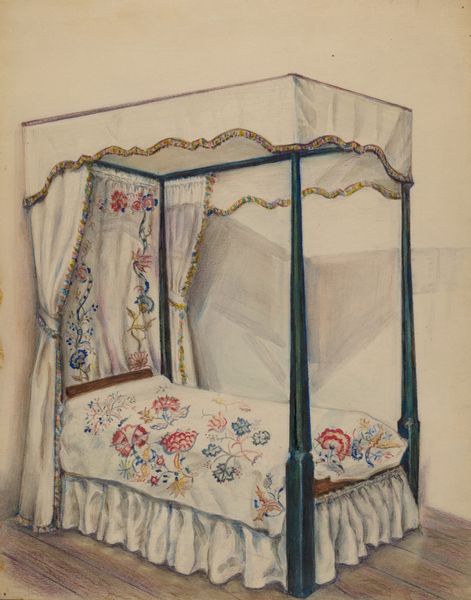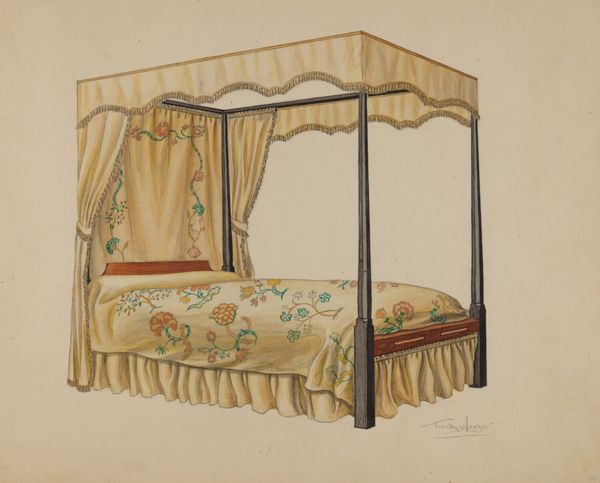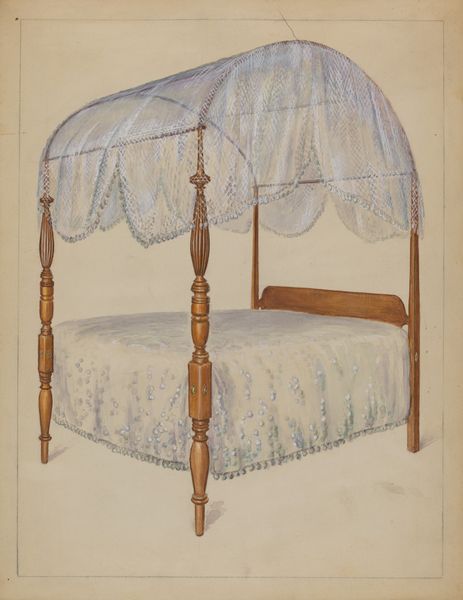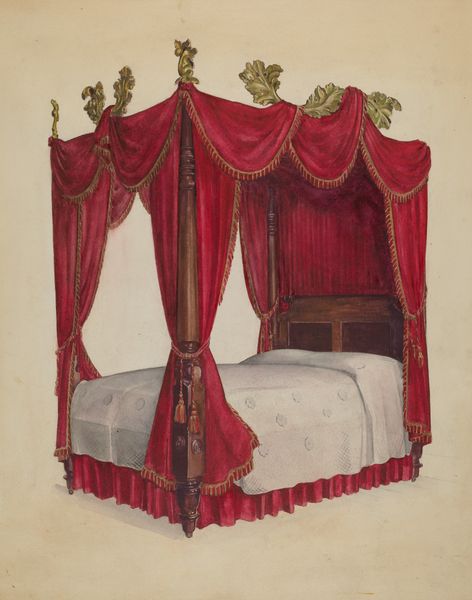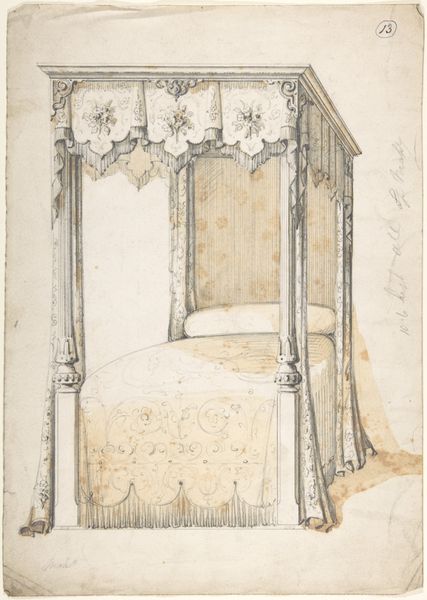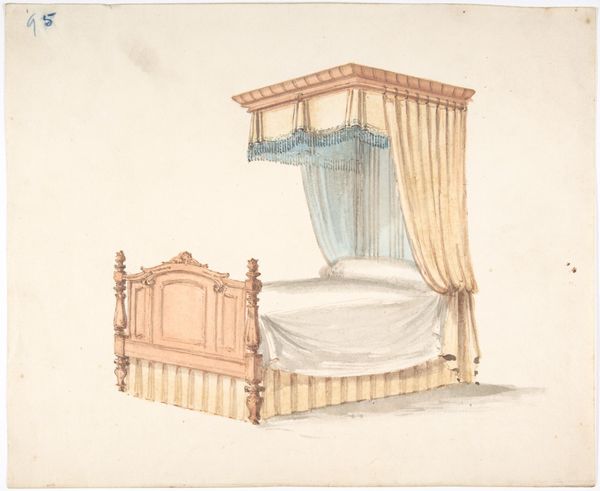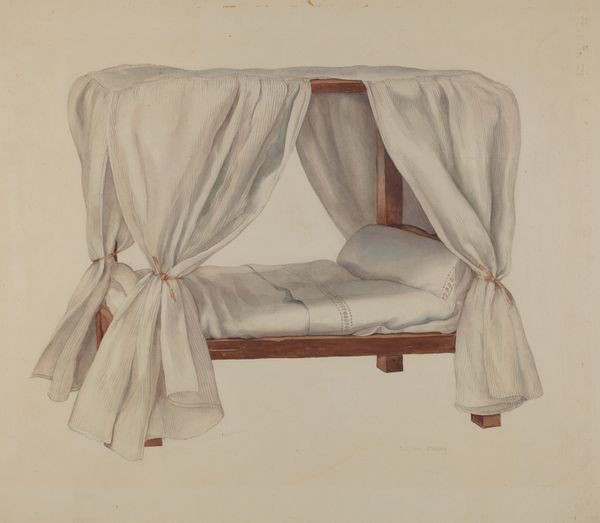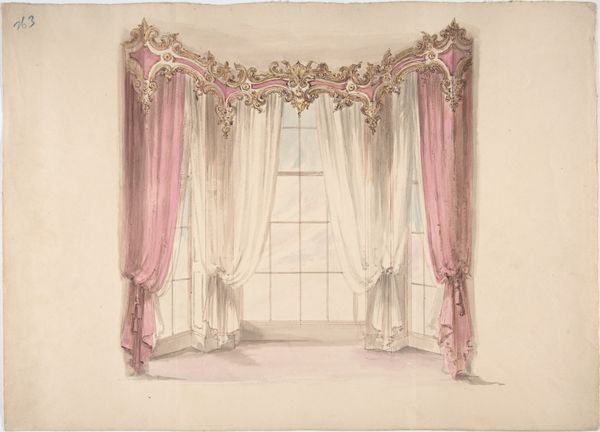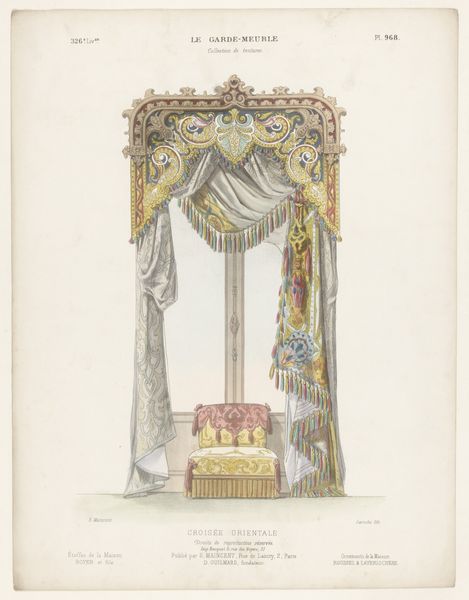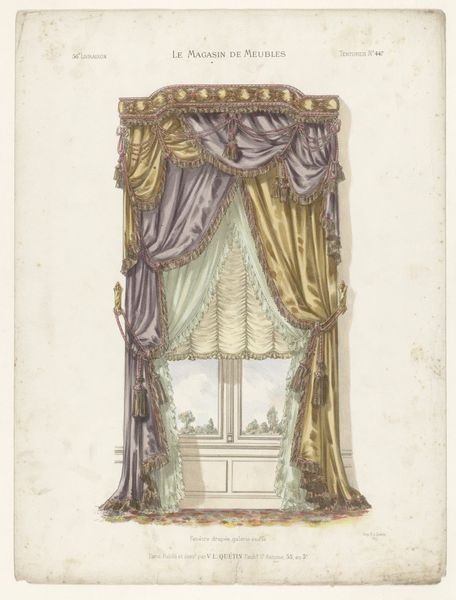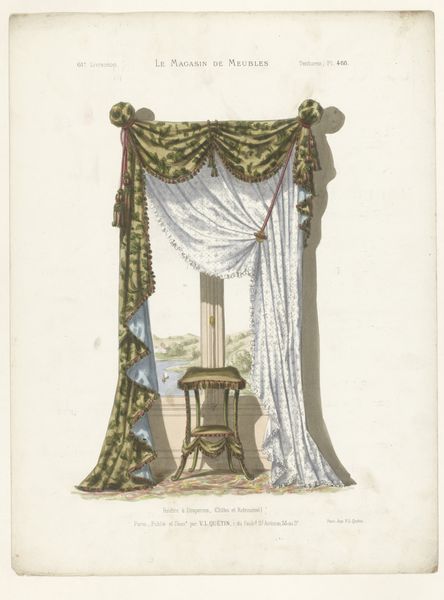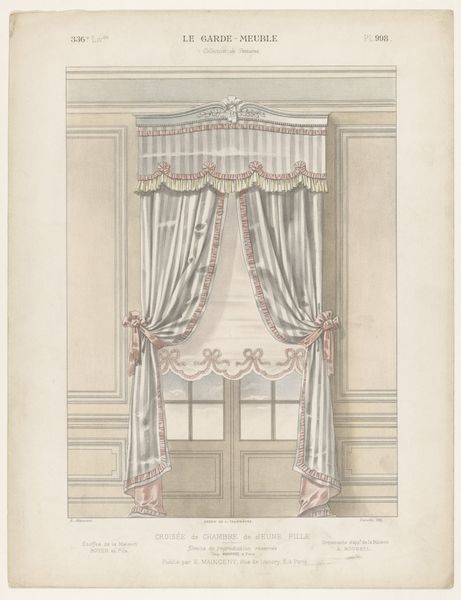
drawing, paper, watercolor
#
portrait
#
drawing
#
water colours
#
paper
#
watercolor
#
decorative-art
#
watercolor
Dimensions: overall: 28.3 x 23 cm (11 1/8 x 9 1/16 in.) Original IAD Object: 84" high; 75" long; 43" wide
Copyright: National Gallery of Art: CC0 1.0
Editor: Here we have Isadore Goldberg's "Bed," a watercolor drawing from between 1935 and 1942. The rendering is quite lovely; it features a very traditionally-styled canopy bed. I am really drawn to the meticulous rendering of the textile patterns. What do you see in this piece? Art Historian: Well, let's start with the medium. Watercolor on paper suggests a relatively accessible and, dare I say, portable form of artistic production. But that clashes somewhat with the subject, doesn't it? A bed, usually a site of rest, labor, birth, and death—rendered in this traditionally "feminine" medium. Who do you think this was made for? Editor: I am not sure who it was made for exactly. Perhaps someone involved in interior design? The artist or buyer maybe wished to explore a sense of domestic space in a decorative style? Art Historian: Exactly. It appears to be an aesthetic study more than anything else. Notice how the textiles become the real focus? What kind of labor went into producing a bed like this? A pre-industrial bed of this type would demand so much skilled labor, which would become more alienated after the rise of manufacturing...How does the work itself comment on its means of production? Is the painting "covering up" a more critical examination of production in favor of sheer decoration? Editor: I guess I had not considered it that way. The piece, in essence, presents the bed as pure object, divorced from the human labor and complex socio-economic systems which makes such production possible. This watercolor abstracts and prettifies all of that to focus simply on form, style and decorative trends! Art Historian: Precisely! By considering materiality, we gain a sharper view of the economic circumstances and implications that are both present in and obscured by the artwork. This close looking makes me wonder what a similar painting of a factory bed or war-time bed might reveal about the social climate of this work... Editor: It is amazing how looking at materials helps uncover those implications. Thanks for broadening my view.
Comments
No comments
Be the first to comment and join the conversation on the ultimate creative platform.
